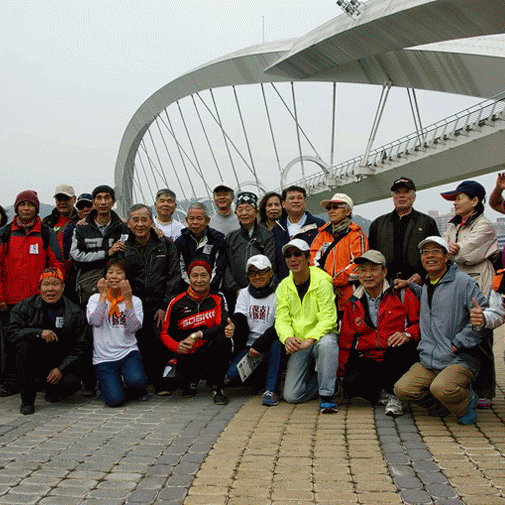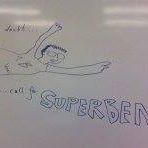Ben Wen
age ~53
from Vienna, VA
- Also known as:
-
- Bin Wen
- Wen Bin
Ben Wen Phones & Addresses
- Vienna, VA
- Horseheads, NY
- Great Falls, VA
- Evanston, IL
- Herndon, VA
Work
-
Company:United environment & energy, llc
-
Address:111 Ridge Rd, Horseheads, NY 14845
-
Phones:(607)7960830
-
Position:Business official
-
Industries:Commercial Physical and Biological Research
Us Patents
-
Bio-Based Adhesive Material For Roof Shingles
view source -
US Patent:7951417, May 31, 2011
-
Filed:Apr 5, 2010
-
Appl. No.:12/754236
-
Inventors:Ben Wen - Horseheads NY, US
Jessica P. Zhang - Horseheads NY, US -
Assignee:United Environment & Energy LLC - Horseheads NY
-
International Classification:B05D 1/12
B05D 1/36 -
US Classification:427186, 427188
-
Abstract:An adhesive product and method of making the product replaces asphalt in the manufacture of roofing shingles. The method comprises steps of forming a mixture of oil comprising fatty acids and a powdered catalyst operable to catalyze the polymerization of the oil; maintaining the oil to powdered catalyst weight ratio in the mixture between 1 to 0. 01 and 1 to 4. 9; heating the mixture to a reaction temperature greater than 100 degrees Centigrade; maintaining the reaction temperature for at least five minutes; and, injecting air into the mixture while maintaining the reaction temperature. In making a roofing shingle, the method includes additional steps of: applying the heated mixture to a fiberglass mat sheet from an upstream roll to form a tacky coated strip; and, adding a layer of granules to the tacky coated strip. The adhesive material of this method comprises polymerized oil and the powdered catalyst.
-
Bio-Based Adhesive Material
view source -
US Patent:8444759, May 21, 2013
-
Filed:Jul 8, 2011
-
Appl. No.:13/178725
-
Inventors:Ben Wen - Horseheads NY, US
Jessica P. Zhang - Horseheads NY, US -
Assignee:United Environment & Energy LLC - Horseheads NY
-
International Classification:B05D 1/12
-
US Classification:106246, 427186, 427188
-
Abstract:A bio-based adhesive and method of making the adhesive replaces or serves as additives for asphalt, sealant, and polymers such as styrene-butadiene-styrene and atactic polypropylene in the manufacture of building or paving materials. The method includes steps of forming a mixture of oil comprising fatty acids group and optionally a powdered material; maintaining the oil-to-powdered-material weight ratio in the mixture between 1 to 0. 00001 and 1 to 20; heating the mixture to a reaction temperature greater than 55 degrees Centigrade; maintaining the reaction temperature until the oil is polymerized; and, injecting air into the mixture while polymerizing the oil. The adhesive of this method comprises a renewable polymer and the powdered material.
-
Bio-Based Coating
view source -
US Patent:8617304, Dec 31, 2013
-
Filed:Feb 23, 2010
-
Appl. No.:12/711085
-
Inventors:Ben Wen - Horseheads NY, US
Jessica Peng Zhang - Horseheads NY, US -
International Classification:C09D 5/26
C09D 191/00
C09D 7/12 -
US Classification:106244, 106264, 106310
-
Abstract:A bio-based coating for a building automatically transmits or reflects heat gain from infrared sunlight. The coating is composed of bio-based polymerized oil and a catalyst that is also a thermochromic material. The catalyst reduces the temperature for polymerization of the oil to create a suspension that forms a hardened mixture when cooled below about 100 degrees Centigrade. The thermochromic properties of the catalyst are operable to switch the hardened mixture from transparent to reflective of infrared light when the temperature rises above a switching temperature in an approximate range of 18 degrees Centigrade to 35 degrees Centigrade. The method of using the coating involves spraying a hot bio-based coating on the roof surface and allowing it to cool. The method of making involves heating the suspension to a reaction temperature, holding at the reaction temperature, and, introducing an air flow through the mixture at the reaction temperature.
-
Bio-Based Adhesive Material
view source -
US Patent:20110244122, Oct 6, 2011
-
Filed:Feb 21, 2011
-
Appl. No.:13/031480
-
Inventors:Ben Wen - Horseheads NY, US
Jessica P. Zhang - Horseheads NY, US -
International Classification:B05D 1/36
C09D 191/00 -
US Classification:427202, 106244
-
Abstract:An adhesive product and method of making the product replaces asphalt in the manufacture of roofing shingles and pavement. The method comprises steps of forming a mixture of oil comprising fatty acids and a powdered material; maintaining the oil to powdered material weight ratio in the mixture between 1 to 0.01 and 1 to 4.9; heating the mixture to a reaction temperature greater than 100 degrees Centigrade; maintaining the reaction temperature for at least five minutes; and, injecting air into the mixture while maintaining the reaction temperature. In making a roofing shingle, the method includes additional steps of: applying the heated mixture to a fiberglass mat sheet from an upstream roll to form a tacky coated strip; and, adding a layer of granules to the tacky coated strip. The adhesive material of this method comprises polymerized oil and the powdered material.
Resumes

Sfd At Trh Communications
view sourceIndustry:
Information Technology And Services
Work:
Trh Communications
Sfd at Trh Communications
Sfd at Trh Communications

Ben Wen
view source
Ben Wen
view sourceName / Title
Company / Classification
Phones & Addresses
Business Official
United Environment & Energy, LLC
Commercial Physical and Biological Research
Commercial Physical and Biological Research
111 Ridge Rd, Horseheads, NY 14845
Business Official
UNITED ENVIRONMENT & ENERGY, LLC
Commercial Physical Research
Commercial Physical Research
111 Rdg Rd, Horseheads, NY 14845
(607)7960830
(607)7960830
Googleplus

Ben Wen
Education:
Massachusetts Institute of Technology - EECS
About:
VP of Business Development at MongoLab, a Cloud MongoDB hoster. This is my work G+ account. I'm also at [email protected]

Ben Wen

Ben Wen

Ben Wen

Ben Wen

Ben Wen

Ben Wen
Flickr
Myspace

Ben Wen Raey Taneo
view source
Ben Wen
view source
Ben Wen Liu
view source
Ben Wen
view source
Ben Wen
view source
Ben Wen
view source
Ben Wen
view source
Ben Wen ()
view sourceYoutube
Get Report for Ben Wen from Vienna, VA, age ~53













